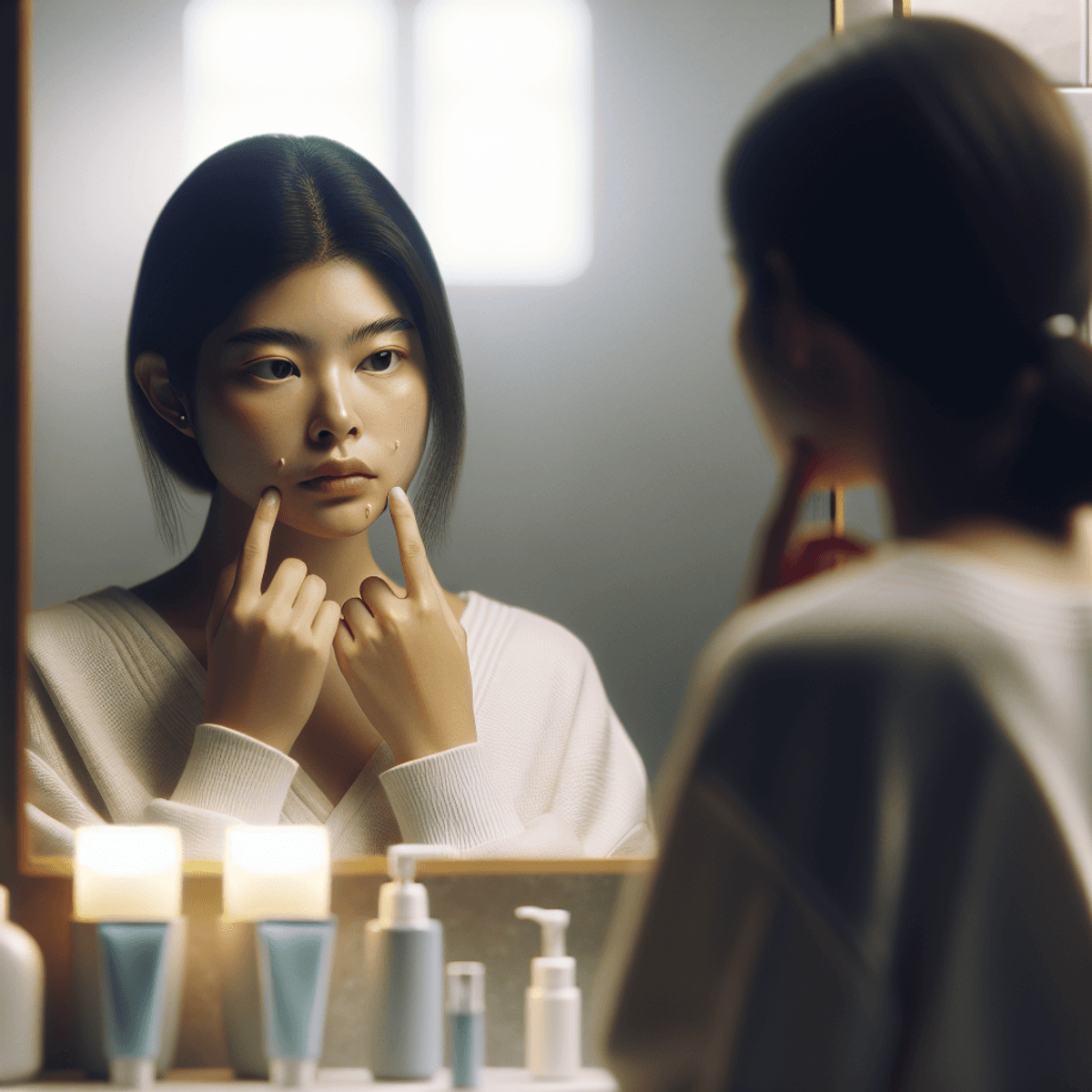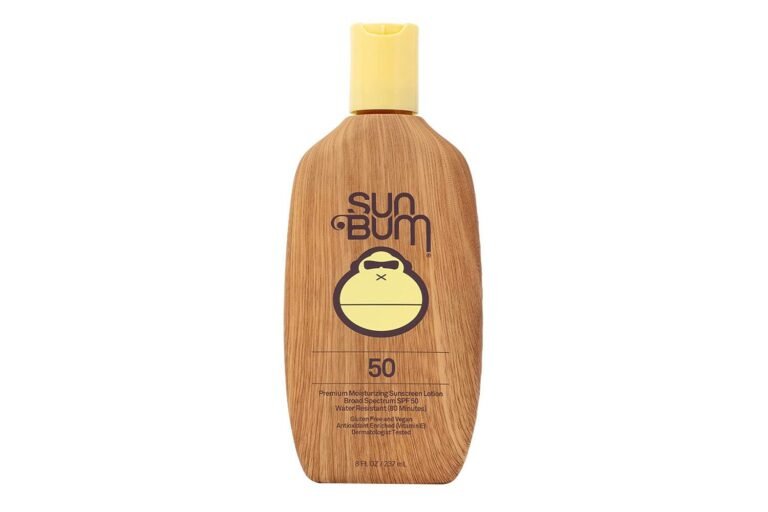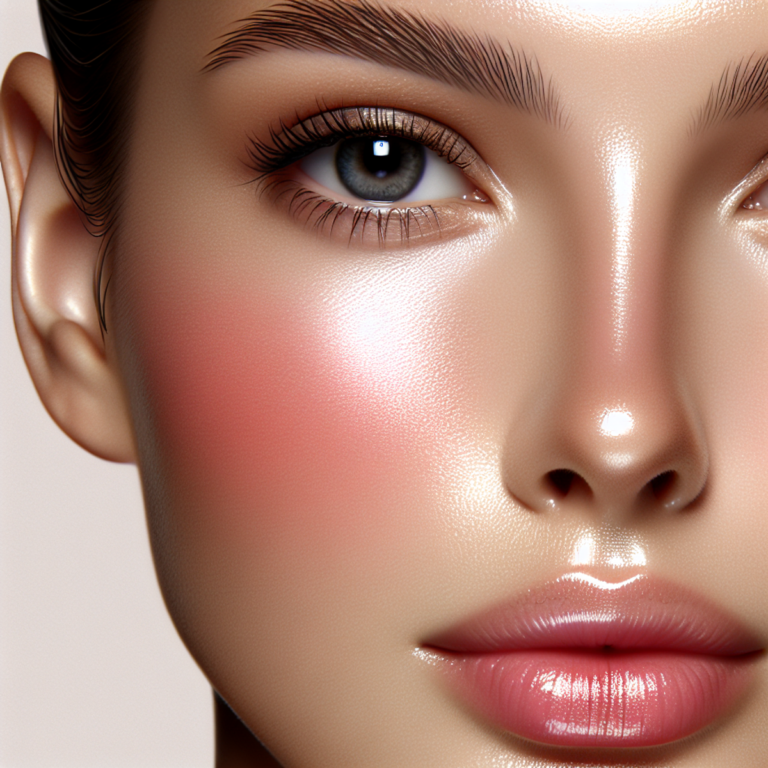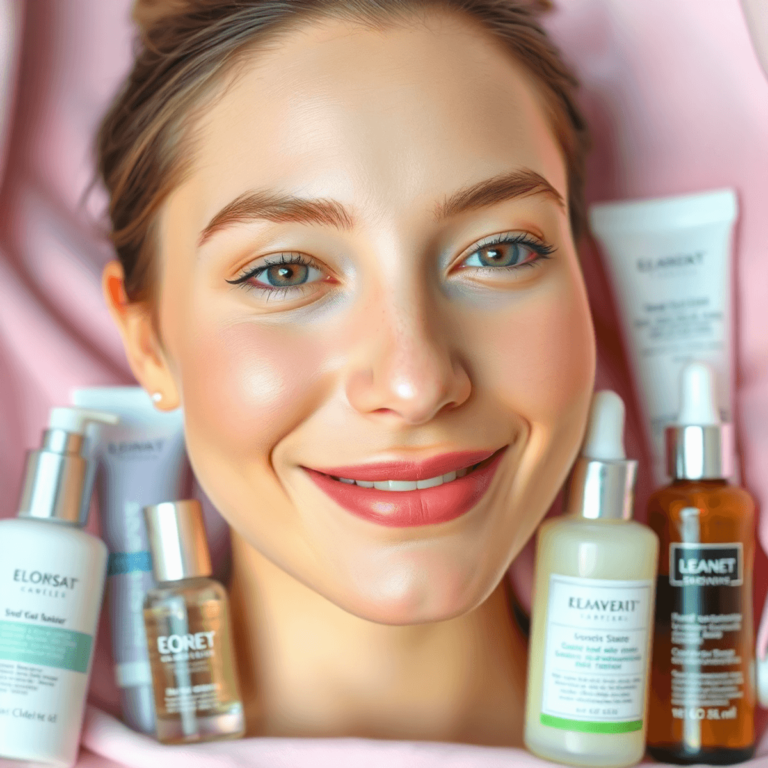How to Get Rid of Chin Acne, According to Dermatologists

Introduction
Chin acne, often characterized by painful pimples on the jawline, can significantly impact your self-esteem and confidence. This type of acne is especially common due to hormonal fluctuations and increased oil production in the chin area.
Addressing chin acne is crucial for maintaining overall skin health. Ignoring breakouts can lead to scarring, persistent inflammation, and an uneven complexion. Understanding how to get rid of chin acne is essential for both your skin’s appearance and its long-term health.
In this article, you’ll learn:
- Insights from dermatologists about the causes and treatments for chin acne.
- Effective strategies to prevent and manage breakouts.
- Expert advice on skincare routines, lifestyle adjustments, and natural remedies.
By delving into these topics, you’ll gain a comprehensive understanding of how to tackle chin acne effectively.
Understanding Chin Acne
Chin acne, often characterized by painful pimples on the jawline, has several underlying causes. One of the most important factors is hormonal changes.
The Role of Hormones in Chin Acne Development
Hormonal changes play a significant role, particularly in women over 25. Mild increases in testosterone levels can lead to more oil production and eventually acne. This condition is often linked to:
- Polycystic Ovary Syndrome (PCOS): Women with PCOS experience higher androgen levels, which stimulate the sebaceous glands, leading to oily skin and breakouts.
- Menstrual Cycle: Fluctuations in hormones during the menstrual cycle can trigger chin acne. Many women notice that their skin worsens right before their period.
Increased Oil Production and Clogged Pores
The chin area has more sebaceous glands than other parts of the face. These glands produce sebum, an oily substance that helps protect and moisturize the skin. However, when sebum production is too much, it can lead to clogged pores and acne formation.
Several factors contribute to this:
- Dead Skin Cells: When dead skin cells accumulate on the surface of your skin, they can mix with excess sebum and clog your pores.
- Bacteria: The bacteria Propionibacterium acnes thrives in clogged pores, leading to inflammation and pimples.
- Cosmetics and Skincare Products: Using products that contain pore-clogging ingredients can make chin acne worse. It’s crucial to choose non-comedogenic products that won’t block your pores.
Understanding these causes of chin acne helps you take specific actions to manage and prevent breakouts effectively. By addressing hormonal imbalances and maintaining a skincare routine that reduces oil production and keeps pores clear, you can significantly reduce the occurrence of chin acne.
How Stress and Lifestyle Affect Chin Acne
Stress-Induced Acne
Stress is a major factor that contributes to chin acne. When you’re stressed, your body releases cortisol, a hormone that can increase oil production in your skin. Higher cortisol levels lead to inflammation and clogged pores, which are the main reasons for acne breakouts. The link between stress and acne is well-known, so it’s important to manage stress effectively.
Lifestyle Factors
Several lifestyle factors can make chin acne worse:
- Diet: Certain foods can trigger or worsen acne. High-glycemic foods like white bread, sugary snacks, and dairy products can spike insulin levels, leading to increased oil production and breakouts. Maintaining a diet rich in fruits, vegetables, and lean proteins can help keep your skin clear.
- Lack of Sleep: Poor sleep quality affects overall health, including your skin’s condition. Inadequate sleep can lead to increased cortisol levels, causing inflammation and potential breakouts. Aim for at least 7-8 hours of quality sleep per night to support healthy skin.
- Skincare Habits: Using the wrong skincare products can worsen chin acne. Products containing comedogenic ingredients clog pores and contribute to breakouts. It’s essential to choose non-comedogenic products specifically designed for acne-prone skin. Regular cleansing helps remove excess oil and impurities that can cause pimples.
- Face Masks (“Maskne”): Wearing face masks for extended periods traps breath and bacteria against the skin, leading to “maskne.” Ensure you clean your masks regularly and consider using breathable materials to minimize irritation.
Managing stress and adopting healthy lifestyle habits are crucial in controlling chin acne. By focusing on these aspects, you can significantly reduce the occurrence of breakouts and maintain clearer skin.
Preventive Measures for Chin Acne
Establishing an Effective Skincare Routine
Creating an effective skincare routine is crucial for maintaining a balanced complexion and preventing chin acne. Dermatologists recommend starting with a gentle cleanser to remove dirt and excess oil without stripping the skin of its natural moisture. Follow this with a toner to balance the skin’s pH and prepare it for subsequent treatments.
Morning Routine
- Cleanse
- Tone
- Apply a lightweight moisturizer
- Finish with sunscreen
Evening Routine
- Double cleanse if wearing makeup
- Tone
- Use any treatment serums (like salicylic acid or benzoyl peroxide)
- Moisturize
Choosing the Right Products for Your Skin Type
Selecting non-comedogenic products is essential to avoid clogging pores, which can lead to breakouts. Non-comedogenic means that the product is formulated not to block pores.
Key Points to Consider:
- Look for Labels: Ensure your skincare and makeup products are labeled as non-comedogenic.
- Avoid Heavy Oils: Ingredients like coconut oil can be pore-clogging; instead, opt for lighter oils such as jojoba or squalane.
- Patch Test New Products: Before fully integrating a new product into your routine, test it on a small area of your skin to check for any adverse reactions.
Makeup Tips to Avoid Aggravating Chin Acne
Makeup can either conceal blemishes or exacerbate them depending on how it’s used. To prevent aggravating chin acne:
- Use Non-Comedogenic Makeup: Choose foundations and concealers that are specifically marked as non-comedogenic.
- Clean Brushes Regularly: Dirty brushes can harbor bacteria that contribute to breakouts. Clean your tools at least once a week.
- Avoid Over-Layering: Piling on too many layers of makeup can suffocate the skin and worsen acne. Use minimal amounts and blend well.
- Remove Makeup Thoroughly: Always remove your makeup before going to bed using a gentle yet effective cleanser such as those recommended in this makeup removal guide.
By diligently following these preventive measures, you can significantly reduce the risk of chin acne flare-ups and maintain a healthier complexion.
Treatment Options Recommended by Dermatologists
Over-the-Counter Treatments for Spot Control
You can start addressing chin acne with over-the-counter treatments. Two of the most effective ingredients to look for are benzoyl peroxide and salicylic acid:
- Benzoyl Peroxide: Helps to kill acne-causing bacteria and reduce inflammation. Typically available in concentrations ranging from 2.5% to 10%, it’s important to start with a lower concentration to see how your skin reacts.
- Salicylic Acid: Penetrates the pores to exfoliate the skin and unclog pores. It helps in reducing swelling and redness, making it an excellent option for spot treatment.
Prescription Options: Retinoids
For more persistent chin acne, dermatologists often recommend prescription retinoids. These vitamin A derivatives promote skin cell turnover, preventing clogged pores and reducing existing breakouts:
- Topical Retinoids: Such as tretinoin or adapalene, are effective in treating mild to moderate acne. They work by speeding up the skin’s natural exfoliation process.
- Oral Retinoids: For severe cases, isotretinoin may be prescribed. This potent medication reduces oil production significantly but requires close monitoring due to potential side effects.
Innovative Treatment Methods
Dermatologists are also utilizing innovative treatment methods like hydrocolloid patches for acne management:
- Hydrocolloid Patches: These patches create a moist environment that promotes healing and keeps the area protected from bacteria and picking. They work by absorbing excess fluid and reducing inflammation.
- Combination Treatments: Sometimes, a combination of treatments is recommended for optimal results. For instance, using benzoyl peroxide during the day and a retinoid at night can effectively manage breakouts.
Using these dermatologist-recommended treatments can significantly improve chin acne over time. Always consult with a healthcare provider to determine the best course of action tailored to your specific needs.
Natural Remedies for Chin Acne
Exploring the Potential Benefits of Probiotics
Probiotics have gained attention as a natural treatment for maintaining a healthy skin biome. These beneficial bacteria can help balance your gut health, which in turn affects your skin.
Gut-Skin Connection
The gut and skin are closely linked. An imbalance in gut bacteria can lead to inflammation, manifesting as acne on your chin.
Sources of Probiotics
Incorporate foods like yogurt, kefir, sauerkraut, and kimchi into your diet. These foods can help maintain a balanced internal environment that may reduce breakouts.
DIY Home Remedies Using Readily Available Ingredients
Several ingredients commonly found at home can be effective in treating chin acne. These holistic approaches offer simple solutions for how to remove pimples naturally and permanently.
- Tea Tree Oil: Known for its antibacterial properties, tea tree oil can reduce acne-causing bacteria on the skin. Dilute it with a carrier oil like coconut oil and apply it directly to the affected area.
- Honey and Cinnamon Mask: Both honey and cinnamon have anti-inflammatory properties. Mixing them together to form a mask can help soothe irritated skin and reduce swelling.
- Apple Cider Vinegar Toner: This natural toner can help balance the pH of your skin. Mix one part apple cider vinegar with three parts water and apply it to your chin using a cotton pad.
- Aloe Vera Gel: Aloe vera is known for its soothing properties. Applying pure aloe vera gel to your chin pimples can reduce redness and inflammation.
These natural treatments offer effective ways on how to get rid of pimples on face without resorting to harsh chemicals. Incorporating these remedies into your routine may help achieve clearer skin while maintaining overall health.
By exploring these natural remedies, you open up various avenues for maintaining clear skin through holistic approaches.
In-office Treatments for Severe Cases
Persistent chin acne can sometimes resist over-the-counter treatments and home remedies. When dealing with stubborn cases, professional intervention might be necessary. Dermatologists offer several in-office treatments that can effectively target severe chin acne.
When to consider professional intervention:
- Unresponsive to OTC treatments: If you’ve tried various over-the-counter products without significant improvement.
- Painful and cystic acne: Large, painful cysts or nodules that do not come to a head.
- Scarring concerns: Severe outbreaks that risk leaving permanent scars.
- Underlying conditions: Acne linked with conditions like polycystic ovary syndrome (PCOS) or hormonal imbalances.
Common in-office treatments:
1. Steroid Injections:
- Benefits: Quickly reduces inflammation and pain associated with cystic acne.
- Process: A diluted corticosteroid is injected directly into the lesion.
- Results: Rapid reduction in size and discomfort within 24-48 hours.
2. Oral Antibiotics:
- Benefits: Targets bacterial infections and reduces inflammation over time.
- Common prescriptions: Doxycycline, Minocycline, and Erythromycin.
- Usage: Usually prescribed for a short term to prevent antibiotic resistance.
3. Hormonal Therapies:
- Benefits: Regulates hormone levels that may be contributing to acne.
- Options: Birth control pills, Spironolactone.
- Considerations: Particularly beneficial for women experiencing hormonal fluctuations.
4. Chemical Peels:
- Benefits: Exfoliates the skin deeply, helping to unclog pores and reduce active lesions.
- Types: Salicylic acid peels are particularly effective for acne-prone skin.
- Frequency: Often performed in a series of sessions for optimal results.
5. Laser and Light Therapy:
- Benefits: Targets bacteria and reduces oil production without damaging the skin’s surface.
- Technologies used: Blue light therapy, laser treatments like Fraxel or Vbeam.
- Efficacy: Can provide long-term reduction in breakouts with minimal downtime.
Incorporating these treatments can significantly reduce the severity of chin acne. Consulting with a dermatologist will help tailor a treatment plan suited to your specific needs.
Overnight Solutions for Quick Relief
When you’re dealing with chin acne, sometimes you need fast-acting solutions to reduce inflammation and appearance by morning. Here are some effective overnight treatments that can help minimize the appearance of pimples while you sleep:
- Benzoyl Peroxide Spot Treatments: This powerful ingredient kills bacteria and reduces oil production. Apply a small amount directly to the pimple before bed.
- Salicylic Acid Gel: Known for its ability to exfoliate and unclog pores, salicylic acid can be applied as a thin layer on affected areas to help reduce swelling and redness.
- Tea Tree Oil: A natural alternative with antibacterial properties. Dab a few drops onto the pimple using a cotton swab.
- Hydrocolloid Patches: These patches not only protect the area from dirt and bacteria but also absorb excess fluid, reducing the size of pimples significantly overnight.
- Clay Masks: Applying a clay mask focused on your chin area can help draw out impurities and reduce inflammation while you sleep. Look for masks containing kaolin or bentonite clay.
- Aloe Vera Gel: Known for its soothing and anti-inflammatory properties, aloe vera gel can be applied to calm irritated skin and promote healing.
These treatments offer quick solutions for those urgent moments when you need to know how to remove pimples overnight. Incorporating these methods into your nighttime routine can provide noticeable results by morning.
Do’s and Don’ts for Overnight Care
When it comes to overnight pimple removal tips, knowing what to do and what to avoid is crucial. Here are essential guidelines to ensure your nighttime routine doesn’t inadvertently worsen your chin acne.
Do’s:
- Cleanse Thoroughly: Always wash your face with a gentle, non-comedogenic cleanser before bed. This helps remove dirt, oil, and makeup that could clog pores.
- Use Targeted Treatments: Apply a spot treatment containing benzoyl peroxide or salicylic acid directly on pimples. These ingredients help reduce inflammation and kill bacteria.
- Hydrate Properly: Choose a lightweight, non-comedogenic moisturizer to keep your skin hydrated without clogging pores. Products with hyaluronic acid can provide moisture without heaviness.
- Change Pillowcases Regularly: Use a clean pillowcase every few days to minimize exposure to bacteria and oils that can contribute to breakouts.
- Hydrocolloid Patches: These patches can be applied directly onto pimples to absorb excess fluid and protect the area from bacteria while you sleep.
Don’ts:
- Avoid Heavy Creams: Steer clear of thick, oily moisturizers that can clog pores and exacerbate acne.
- Don’t Pick or Squeeze: Resist the urge to pop pimples. This can lead to increased inflammation, scarring, and prolonged healing time.
- Skip Alcohol-Based Products: Avoid using toners or treatments with high alcohol content, as these can dry out and irritate the skin.
- No Touching Your Face: Try not to touch your face throughout the night. Oils from your hands can transfer to your skin and worsen breakouts.
- Beware of Hair Products: Ensure hair products like gels or sprays don’t come into contact with your face as they can clog pores and trigger acne.
Following these do’s and don’ts enhances the effectiveness of your overnight treatment efforts, reducing the risk of further irritation or breakout.
Conclusion & Next Steps
Achieving clear skin is a journey, not an overnight transformation. Proactive management of chin acne involves a combination of preventive measures, appropriate treatments, and lifestyle adjustments. Consistency in your skincare routine plays a crucial role in maintaining a balanced complexion.
- Preventive Measures: Regular cleansing with non-comedogenic products helps prevent clogged pores.
- Effective Treatments: Incorporate recommended over-the-counter solutions such as benzoyl peroxide or salicylic acid for spot treatment. For persistent cases, consult a dermatologist about prescription options like retinoids.
- Lifestyle Adjustments: Monitor your diet, ensure adequate sleep, and manage stress levels to reduce the likelihood of breakouts.
Engage with dermatologists for tailored advice that suits your specific skin needs. By adopting these strategies, you can effectively combat chin acne and achieve healthier skin.
Remember: Patience and consistency are key. With the right approach, clear skin is within reach.
FAQs (Frequently Asked Questions)
What causes chin acne?
Chin acne is often caused by hormonal fluctuations, particularly in women over 25. Increased oil production from sebaceous glands can lead to clogged pores, resulting in breakouts.
How does stress affect chin acne?
Stress can exacerbate chin acne by increasing cortisol levels, which in turn leads to inflammation. Lifestyle factors such as poor diet, lack of sleep, and inadequate skincare habits can further worsen breakouts.
What are some effective preventive measures for chin acne?
Establishing a consistent skincare routine using non-comedogenic products is key to maintaining a balanced complexion. Additionally, choosing the right makeup and skincare products can help prevent aggravation of chin acne.
What treatment options do dermatologists recommend for chin acne?
Dermatologists often recommend over-the-counter treatments like benzoyl peroxide and salicylic acid for spot control. Prescription options include retinoids to promote skin turnover, along with innovative methods such as hydrocolloid patches for protection and healing.
Are there any natural remedies for chin acne?
Natural remedies may include the use of probiotics to maintain a healthy skin biome and DIY home treatments with readily available ingredients that might help reduce chin pimples.
What should I do for quick relief from pimples overnight?
Effective overnight treatments can minimize the appearance of pimples while you sleep. However, it’s important to follow essential tips to avoid further irritation or breakouts during overnight care.










